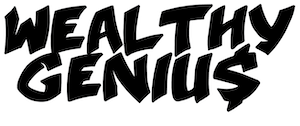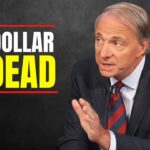| Net Worth: | $3 Million |
|---|---|
| Profession: | Professional baseball player |
| Date of Birth: | July 2, 1964 |
| Country: | United States of America |
| Height: | 1.93 m |
About Jose Canseco
Canseco was the son of Jose Sr. and Barbara Canseco, and he was born in Havana, Cuba. In addition to being a former MLB player himself, he shares a sibling with the same name, Ozzie Canseco. Jose Sr., a territory manager for the oil and gasoline company Esso and a part-time English instructor, lost both his job and his home when Fidel Castro came to power in 1959.
The younger Jose Canseco attended Miami Coral Park High School and played baseball there, but he was never a part of the varsity team until his final year. In his junior year, he was awarded the team’s MVP, and the following year, he received the same honor for the varsity squad. In 1982, he finished school.
When Canseco was available in the 15th round of the 1982 MLB draft, the Oakland Athletics picked him up. He debuted professionally in baseball with the Florida State League’s Miami Marlins. Canseco began the 1985 season with the Class-AA Huntsville Stars, where his home runs (25 in half a season) often landed within sight of the Memorial Parkway behind Joe Davis Stadium, earning him the nickname “Parkway Jose”
Canseco was a “September call-up” with the Oakland Athletics in 1985, after having won Baseball America’s Minor League Player of the Year Award. In 1985, he got into 29 games at the major league level and hit.302 with five homers and thirteen RBIs. Canseco hit.330 with 41 homers, 140 RBIs, 73 extra-base hits, 336 total bases, and a slugging percentage of.622 across all of 1985’s professional leagues.
The Rookie of the Year award went to him (1986). He hit 31 home runs, drove in 113 runs (good for sixth in the AL), and doubled 35 times (enough for tenth) in 691 at-bats (good for ninth), all while missing only three games the whole season. And with 157 punches thrown, he was fifth in the league. Canseco’s batting average and fielding percentage both rose from 1986 levels. He spent the entire season in left field and finished with a.976 fielding average, 267 putouts, 12 assists, and three double plays, all of which were first in the league (1st).
Mark McGwire joined Jose Canseco on the Athletics in 1987 as a first baseman. Canseco and McGwire became nicknamed as the “Bash Brothers” because of how devastating they were offensively when they played together. The 1987 season was essentially a repeat of Canseco’s rookie year offensively. He hit 31 home runs, drove in 113 runs (good for sixth in the AL), and doubled 35 times (enough for tenth) in 691 at-bats (good for ninth), all while missing only three games all year.
Canseco pledged during 1988 spring training that he would steal 40 bases and hit 40 home runs. With a.307 batting average, 120 runs scored (second in the league), 347 total bases (second in the majors), 76 extra-base hits, 124 RBIs, 42 home runs, a.569 slugging percentage, and a 14.5 home run per at-bat ratio, he was unanimously voted the American League’s Most Valuable Player in 1988, becoming the seventh player in league history to win the award unanimously. The.306 batting average at the end of the regular season was the highest for José since 1988, and his 24 home runs were a career high.
Canseco injured his wrist in spring training in 1989, forcing him to sit out the first 88 games of the regular season. Game 3 of the 1989 World Series had to be postponed due to a massive earthquake that hit the San Francisco Bay Area before the game.
Canseco was taken into custody in Florida on February 10th, 1989, for reckless driving after allegedly leading an officer on a 15-mile chase. He received a $500 fine after being found guilty. Canseco was arrested in California on April 11, 1989, for having a loaded semi-automatic weapon in his vehicle. He pled no contest and was granted $2,500 bail, allowing him to go free.
The 1990 season began with the Oakland Athletics as the defending World Series champions and the optimism that Canseco would remain healthy for the duration of the year. The 1995 season was the one in which Canseco made the most money of his career ($5.8 million), as reported by the Baseball-Reference website.
Canseco’s success carried over into the following year, and by the All-Star break of the 1991 season, he was tied for the league lead with 21 home runs and 63 RBIs, yet he was never voted into the All-Star Game by fans or selected as a reserve player by his own A’s manager Tony LaRussa, who was managing the American League for the third consecutive year. His final batting average during the 1991 season was. He hit.266 with 44 homers, tying Cecil Fielder of Detroit for the league lead in homers, 122 RBIs, 26 steals, and a slugging percentage of.556. With a home run every 13.0 at-bats, he led the American League and was fourth in MVP voting.
Between 1985 and 1992, he hit 231 home runs for the A’s, second only to Reggie Jackson in that category since the Athletics relocated to Oakland in 1968. Having hit 18 home runs by the All-Star break, Canseco was voted to start his fourth All-Star Game in five years, but he was forced to sit out with a strained right shoulder and was replaced by Joe Carter. In 1992, the Athletics returned to contention.
Despite missing around 120 games between 1989 and 1990 and nearly 20 more during the first half of the 1992 season, he still managed to amass a career total of 320 games played for the A’s between 1986 and 1992. Canseco was dealt to the Texas Rangers by the Oakland Athletics for Rubén Sierra, Jeff Russell, Bobby Witt, and cash at the bottom of the first inning of their game on August 31, 1992 against the Baltimore Orioles. Canseco played in 115 games for the Athletics and the Rangers in 1992, hitting 26 home runs (9th in the AL) and driving in 87 runs despite dealing with injuries and being traded to the team.
After an argument with his then-wife Esther Canseco on February 13, 1992, Canseco rammed his Porsche into her BMW. He was arrested and charged with aggravated violence.
Canseco entered a not guilty plea to aggravated assault charges on March 19, 1992, and was sentenced to counseling and community service.
The first quarter of the 1993 season was a relatively healthy one for Canseco, as he appeared in all of the games (45 games). On May 26, 1993, while playing for the Texas Rangers against the Cleveland Indians, Carlos Martnez hit a fly ball that Canseco failed to catch as he ran across the warning track. In 1993, he played in 60 games and finished with a.256 batting average, 10 home runs, and 46 RBIs.
Canseco regained his power-hitting prominence in the 1994 season, despite the fact that it was cut short due to a strike. He was a designated hitter for the whole season but still managed to rank among the American League leaders in home runs.
Canseco, who had been used exclusively as a DH in 1994 and 1995, started in right field for Game 3 of the American League Division Series. He had signed a five-year deal with the Athletics starting in 1990, and it expired in 1995. The 1995 season was the one in which Canseco made the most money of his career ($5.8 million), as reported by the Baseball-Reference website.
By the All-Star break in 1996, Canseco had already hit 26 home runs, which was a great start to the year for him (3rd in the league at that point). There were just 39 games he played between May 18 and June 29, yet he hit.306 with 19 homers and 44 RBIs. Red Sox manager Kevin Kennedy was fired at the end of the 1996 season, and Canseco asked to be traded away from the team.
He was sent to the Oakland Athletics in exchange for pitcher John Wasdin in January of 1997. The front office of the A’s informed him the day after he found out he was returning to Oakland that ticket sales that day were the biggest they’d been in over three years, largely due to the Bash Brothers’ reunion. Canseco was arrested for assaulting his then-wife Jessica in November 1997. He entered a no contest plea in January of 1998 and was given a year of probation and ordered to undergo treatment.
Canseco signed a $2.1 million contract with the Toronto Blue Jays on February 4, 1998. He saw increased time in the outfield as the season progressed, playing 76 games between left and right field for a combined.960 fielding average and 5 mistakes in 126 total opportunities. Although Canseco hit a career-high 46 home runs in 1998, he received little interest from teams looking to sign free agents.
Canseco has stated that his only season without using PEDs was in 1998 with the Toronto Blue Jays due to his pending divorce at the time. His 1999 one-year deal with the Tampa Bay Devil Rays was worth a total of $3.3 million, including incentives. Canseco hit 303 home runs in 1,145 games throughout the 1990s, good for sixth in the majors despite missing about 350 games due to injuries.
Canseco participated in the Big League Challenge home run derby, organized by the MLBPA and held in Las Vegas at Cashman Field in February 2000, before the start of spring training for the next MLB season. For the upcoming 2000 season, the Devil Rays re-signed Canseco to a three million dollar deal.
Canseco signed a plate appearance-heavy, incentive-laden contract with the Anaheim Angels on January 16, 2001. Canseco was let go by the Angels after just 39 at-bats in spring training, during which he hit.231 with no home runs. After splitting time at the plate with Glenallen Hill of the Yankees the previous season, he was passed over for the starting DH role with Anaheim.
Canseco and his brother Ozzie were charged with two counts of aggravated violence after an October 2001 bar fight in Miami Beach that left one man with a fractured nose and the other needing 20 stitches in his mouth. Both of the brothers entered guilty pleas, and they were placed on probation with community service.
Hill hit.136 with one home run in 16 games for the Angels in 2001, his final year in the majors before being released in June. Major League Baseball’s Montreal Expos, then led by Omar Minaya as general manager and Frank Robinson as manager, signed Canseco to a minor league deal in the spring of 2002. Canseco announced his retirement from Major League Baseball on May 13, 2002, with 482 career home runs.
Canseco retired in May 2002, and he has since theorized that he was “blackballed” from Major League Baseball. He also said that he was preparing a tell-all book about his baseball career and the widespread use of anabolic steroids in the sport. Jose Canseco’s efforts to give up steroids are the subject of the 2008 A&E Network documentary Jose Canseco: Last Shot. In it, he expresses sorrow for having revealed the steroid use of former teammates and for having written his tell-all books.



